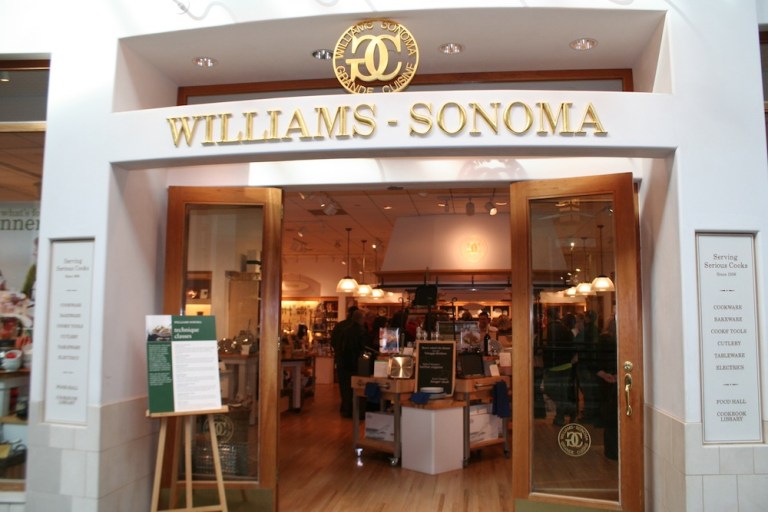
More retailers are adopting the view that closing stores isn’t a failure or a loss, but simply a pathway to greater success. Closing 10, 20 or 100 locations is simply a way to remove the weak links and focus more heavily on locations and strategies that are generating better returns.
So, when Williams Sonoma said on its 2017 fiscal year conference call that it plans to close 80 underperforming stores as their leases expire within the next three years, the announcement was made without any sense of alarm or panic — and indeed, by the numbers, there was no need for either.
Seeking Alpha dove into the details, noting first and foremost that revenue per share has risen steadily between 2001 ($18.23) and 2017 ($63.21), with the exception of two years during the Great Recession. The brand had recovered from that dip by 2011, and earnings per share followed a similar trajectory.
More importantly, Williams Sonoma has avoided long-term debt almost entirely. Its debt level sat at zero for years, until it recently opened a $300 million line of credit to support brand and growth flexibility. This modest debt could, if necessary, be paid off with one year’s net profits, providing a very effective buffer against the likely interest rate rise in the coming years.
One way to avoid debt is by terminating failing assets before they become a significant drain on resources — the 80 store closures announced during the call, for example. Nearly a quarter of those stores could even be closed before their leases expire. Breaking those leases would create a short-term expense, but the company believes it will support longer-term savings as it avoids sinking funds into doomed locations.
This could also give Williams Sonoma a leg up in future and ongoing lease negotiations, Seeking Alpha noted. The move sends a message to landlords that the company is not afraid to walk away from leases that aren’t working out, giving Williams Sonoma the upper hand and potentially leading to better terms.
The company has also been transitioning into, and subsequently balancing, eCommerce sales with those from brick-and-mortar. In fact, it says more than half its sales are generated online. As the strategic store closures demonstrate, however, Williams Sonoma continues to put a heavy emphasis on excelling in physical retail, viewing brick and mortar as its greatest brand introduction and customer acquisition tool.
To that end, the company is actively growing its presence overseas, with a 48 percent increase this past year across its eight brands: Williams-Sonoma Home, Pottery Barn, Pottery Barn Kids, PB Teen, West Elm, Marc and Graham and Rejuvenation. Williams Sonoma believes international growth will also continue to bolster online sales in a positive feedback loop.
In Other Brick-And-Mortar News
Adidas is closing another 170 stores after the 220 it shuttered last year, 180 of which were in Russia and 37 in North America. Like Williams Sonoma and others, Adidas is shifting, not shrinking. It plans to focus on new stores in 10 to 15 cities around the world and will invest in eCommerce and distribution infrastructure. The athleticwear brand has seen a 16 percent increase in currency-neutral revenues supported by both streetwear and the running category.
Esprit is closing 67 stores in Australia and New Zealand — in other words, all of them. The U.S.-founded brand, which set up shop Down Under in 1981, has watched sales plummet 64 percent over the past seven years and has been unable to stem the tide of lost business in the face of growing brands like Uniqlo, Zara and H&M. Esprit has already closed all its North American stores, and has pulled out of Spain, Denmark and Sweden.